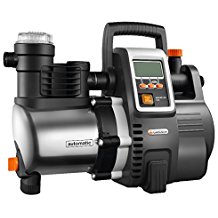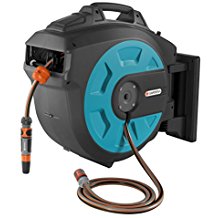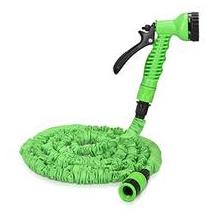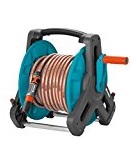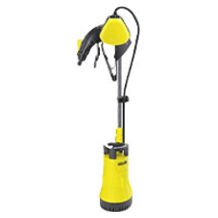Deep well pump purchasing advice: how to choose the right product
- What You Need to Know
- Deep well pumps bring water from wells or cisterns to the surface.
- They are suitable for watering gardens and for supplying water for flushing toilets and washing machines.
- For delivery heights of eight to ten metres, a garden pump or a domestic waterworks is sufficient. For deeper boreholes, you need a deep well pump.
- Models with small widths can also be used in particularly narrow boreholes.
- Individual models sometimes differ in terms of flow rate, possible operating depth and tolerance of sandy water.
What is a deep well pump used for?
Deep well pumps are submersible motor pumps that transport water from underground boreholes, wells, tanks or cisterns to the surface. They are used especially for pumping from deep water extraction points with small diameters. Normal garden pumps are still suitable for pumping water from eight to ten metres, while deep well pumps are used for deeper extraction points.
A deep well pump usually consists of an elongated, narrow stainless steel housing that is completely submerged in water. A stainless steel filter embedded in the housing sucks in the water and traps coarser particles. A power cable and a water hose lead from the unit to the surface. While the power cable is permanently connected, a water hose is usually not part of the scope of delivery: an ordinary garden hose can be connected to the pump to transport the water to the surface.
Note the inner diameter of the garden hose
With some deep well pumps, a suitable garden hose is included in the scope of delivery, with others you have to buy it separately. Use a hose with a minimum internal diameter of 25 millimetres, otherwise the line resistance will be too high and the pump performance will decrease.
Some manufacturers use an additional pull or safety rope with their models. This means that you do not have to pull on the hose or power cable when removing the pump from the water tapping point. This is good for the longevity of the pump, as no cable breaks or hose ruptures are to be expected even with frequent removal.
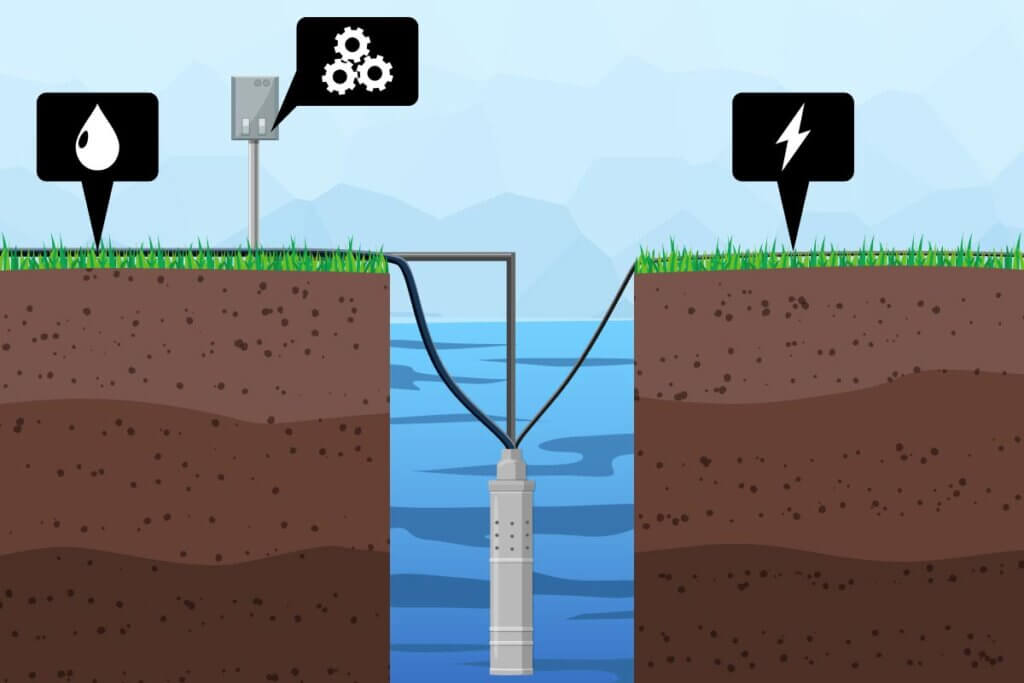
Deep well pump, garden pump and domestic waterworks
The most important differentiation criterion is the maximum possible suction depth: while garden pumps and domestic waterworks can transport water from a maximum depth of eight to ten metres, deep-well pumps – also known as submersible pumps – are suitable for pumping water from deeper tapping points. The water usually pumped from drilled and percussion wells can be used for watering the garden and for supplying well water for the toilet or washing machine. This way you can save a lot of expensive drinking water and do your wallet a favour.
Deep well pumps are designed for underwater operation, which means they are completely submerged under water. With an integrated suction filter on the underside, they draw in water and transport it through the pump housing to the pressure connection where the water leaves the pump. The well water then reaches the surface via a connected standard garden hose. In contrast, a domestic waterworks is usually mounted above ground, for example in a shed or on the wall of the house, and draws water from cisterns or wells via a suction hose.
Is it worth investing in a deep well pump?
Due to the increasingly hot, dry summers, it is worthwhile to integrate already existing alternative water sources into the consumption mix. This is especially easy if you already have a water well, a well bore or a water shaft on your property, because: Tap water is expensive.
Especially if larger flowerbeds or lawns need to be watered, the use of drinking water quickly becomes expensive. According to the State Office for Statistics and Services IT.NRW, the price of a cubic metre – i.e. 1,000 litres of drinking water – can vary considerably from town to town or municipality to municipality. In addition to the average 1.67 euros you had to pay for a cubic metre of drinking water in 2016, there is also an average of 2.67 euros in wastewater fees.
Thus, the construction of a well can pay for itself after only a few years of operation, as you also do not have to pay wastewater fees when using the well water. Well builders help with the planning and realisation of the water point in your own garden.
Well water is particularly suitable for watering outdoor areas, for washing textiles in the washing machine and for flushing toilets. For reasons of hygiene, it is not recommended to feed the dishwasher, and in most cases it is also not suitable for drinking. This is what distinguishes the water from your own garden from tap water, which has the high quality of drinking water due to chemical processes. Using it for the purposes described above also protects the environment, as fewer purification chemicals are used.
Deep well pumps are generally quiet
You do not have to worry about the noise level of most models: Due to their design, the models emit less noise compared to other types of pumps such as domestic waterworks. In addition, the motor unit is located under water. Due to the absorbing effect, a large part of the noise does not even reach the surface.
Criteria for choosing a model
When choosing a deep well pump, you need to consider a few purchase criteria. For example, the maximum delivery head must be adapted to the depth of the well and the distribution of consumers in the house and garden. Equally relevant to the purchase decision is the maximum water delivery rate per hour.
Number of pump impellers
The motor-driven pump impellers are the heart of a deep well pump: they increase the flow rate and thus the pressure of the water. The more pump wheels are installed, the greater the maximum water volume and the highest possible pressure. The rotary motion drives the water to the outside of the casing, from where it is forced radially upwards towards the pressure outlet.
How many pump wheels are needed depends on what you want to use your deep well pump for. For pure garden irrigation, models with six impellers are sufficient. If you also want to pump water into the house, you should choose models with at least ten impellers.
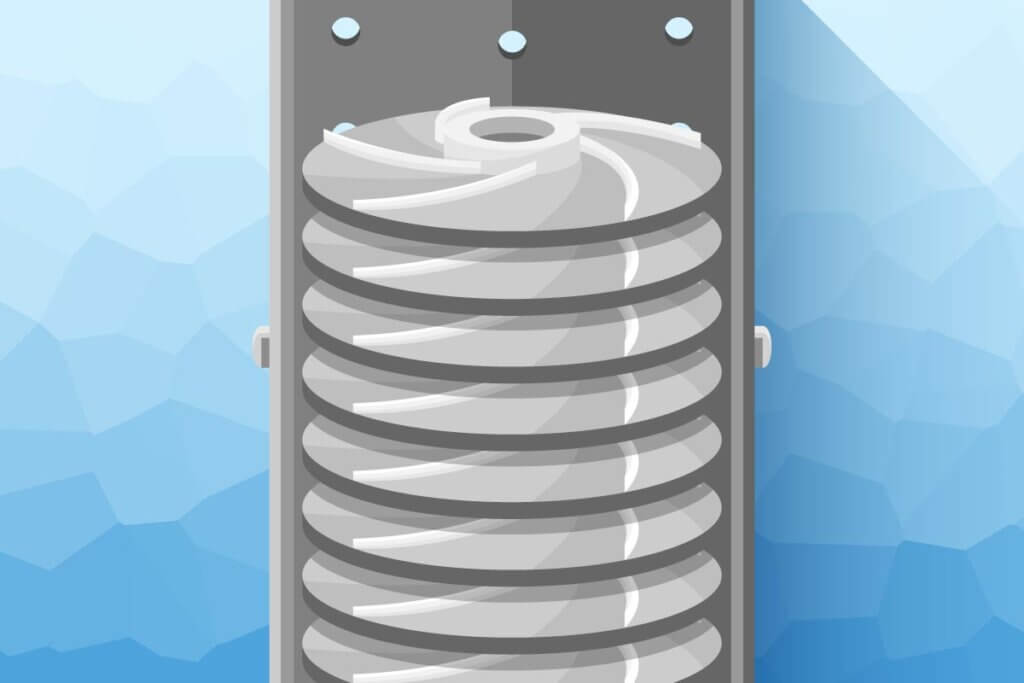
Pump diameter
One of the most important criteria when choosing a deep well pump is its diameter: after all, the device must fit into the often narrow well. Artificially constructed, particularly deep drilled wells in particular can have a very small diameter of only eight centimetres.
The pump diameter is usually given in inches. There are two common unit sizes:
- 3-inch pumps with a diameter of 7.6 centimetres
- 4-inch pumps with a diameter of 10.1 centimetres.
When choosing, make sure that the pump has enough room in the shaft, but also that it is not so loose that it can turn.
However, the smaller 3-inch pumps have clear disadvantages: they have a higher number of revolutions per minute, thus consume more electricity than the 4-inch models and also have a lower flow rate due to their smaller volume. 3-inch pumps should therefore only be used in well shafts whose diameter is less than 10 centimetres.
Some manufacturers try to compensate for the disadvantage of the lower pumping capacity by using higher speeds. Although this increases the pumping capacity, abrasive particles such as sand have a more aggressive effect on the water-conveying impellers at higher speeds, causing them to wear out more quickly.
Maximum immersion depth
The maximum immersion depth – sometimes simply referred to as submersion depth – indicates the maximum water depth in metres at which the pump can be operated under water without suffering damage. If the pump swims deeper in the water than the approval allows, it can be damaged by excessive pressure. On average, the maximum submersion depth is 20 metres. To avoid damage, follow the operating instructions before using the pump.
Maximum head
The delivery head indicates the maximum depth of the well so that the deep well pump is able to deliver the water to the surface. For common models, it is between 40 and 60 metres. This distinguishes them from garden pumps or domestic waterworks, for which the limit is already reached at a depth of about eight to ten metres. Bore wells are deeper than conventional dug wells. The former therefore usually supply higher-quality water. So when choosing a model, make sure that the maximum pumping height of the model corresponds to the conditions in your garden.
Maximum line pressure
The pressure that the pump can generate is expressed in bar. It influences the maximum delivery head: when water is transported upwards, the water pressure available at the surface decreases by one bar every ten metres. You must therefore calculate whether there is still sufficient water pressure for your purposes due to the respective pressure loss at the surface or at the point of use in the house.
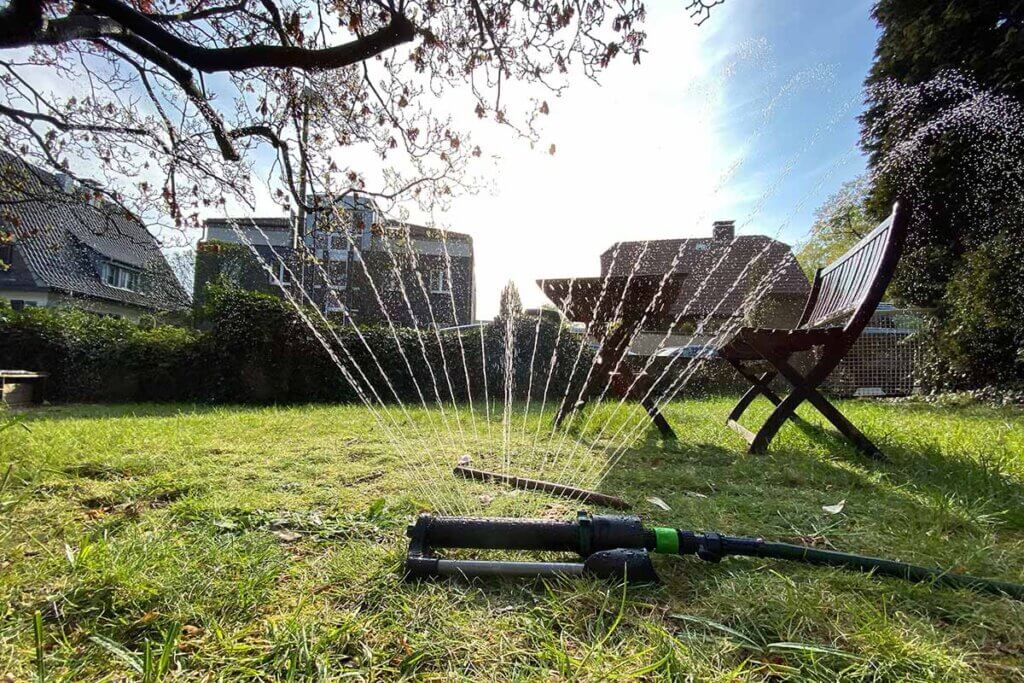
Length of the power cable
The power cable is permanently connected to the pump unit. Since it is not possible to extend it under water, the length of the power cable determines to a large extent the possible operating depth in the borehole. In most models, the power cable leads from the pump to a transformer, which must be stored above ground. The mains plug for the socket then follows behind the transformer.
Pull cable
When choosing a model, you should make sure that a pull cord can be attached to the pump. Metal eyelets on the housing are suitable for this purpose. The reason why this safety rope is useful is that if you want to remove the pump from the fountain, you do not have to pull it out by the power cable or the water hose. The latter methods could lead to a short circuit or a leak in the garden hose in the medium term. Whether the pull rope is part of the scope of delivery depends on the model. If there is only one eyelet, you could obtain a sufficiently long rope yourself.
Delivery rate
The delivery rates of deep well pumps range from 3,000 to 12,000 litres per hour. If you want to water a larger garden, it is best to choose a model with an hourly flow rate of at least 4,000 litres. If additional consumers such as toilet flushes or the washing machine are fed, 6,000 litres per hour should be the lower limit. Ambitious users who need more water or larger quantities of water in a shorter time should look for a more powerful model.
Power rating only of limited relevance
Although the rated power in watts can be a first indication of performance, it is not generally meaningful. Even a high wattage – most pumps are around 1,000 watts – is no guarantee of a sufficiently high water flow rate or sufficient water pressure, measured in bar. Therefore, pay attention to the latter information instead.
In general, you should not run the pump at maximum power for a long time in order to keep wear low. Continuous operation at 70 to 80 percent of maximum output is advisable.
Dirt filter
The majority of models have a particle filter integrated in the housing. Here, dirt and coarser particles are prevented from entering. Sand grains contained in the groundwater can become a challenge for the pump in the long term. Very small particles are usually not a problem. They usually pass through the impellers inside the pump without leaving any damage. If your well is located in a region with highly sandy groundwater, it is advisable when purchasing to ensure that the pump can withstand particle sizes of up to two millimetres. As a general rule, the more large particles find their way through the pump, the greater the wear.
Automatic switch-on and switch-off and non-return valve
Ordinary well pumps go into operation as soon as you switch on the power. They only stop when you press a corresponding button or pull the mains plug. This is very impractical when using the well water for toilet flushing, washing machines or outdoor taps. In all these cases, it is desirable for the pump to respond automatically to the demand and provide water by pumping.
Deep well pumps – also called cistern pumps – usually have an automatic feature. This means that they start operating automatically as soon as a consumer such as a water tap is turned on or a washing machine opens water valves for operation. When no more water is needed, the pumps switch themselves off again. This makes them active well pumps. A non-return valve prevents the water from flowing back when the pump is switched off, so that water pressure always remains in the pipe: The water is thus available directly when a tap is turned on.
Dry-running protection and thermal protection switch
The dry-running protection automatically switches off the pump when the water level is low. This is to prevent the mechanics from running dry and damaging the unit. A thermal protection switch shuts down the unit as soon as it threatens to overheat. This almost only happens when the unit is running dry, because during pump operation under water, the unit cools itself through the water flowing through it. If you pay attention to these safety features when making your purchase decision, you will not have to watch the pump continuously during operation.
Permissible water temperature
Common deep well pumps transport water in a temperature range of 5 to 35 degrees Celsius. This is perfectly adequate for almost all applications involving the use of a well. However, if you want to transport colder or warmer water to the surface, you will need to purchase special models.
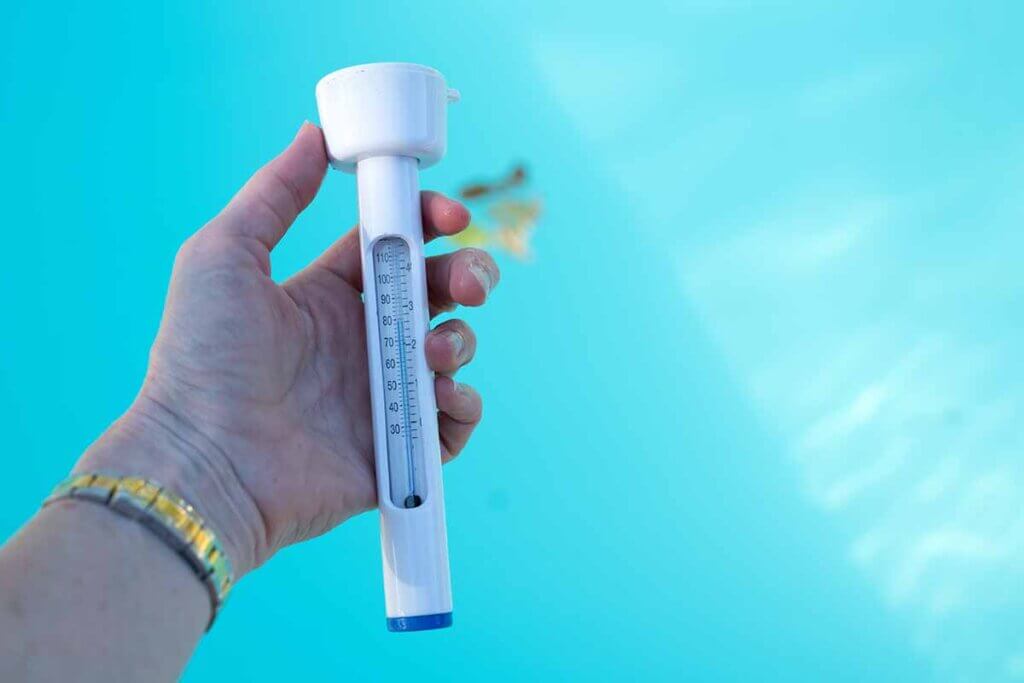

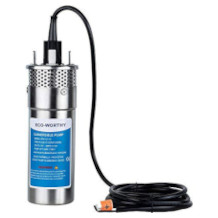
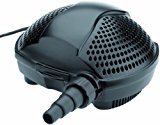
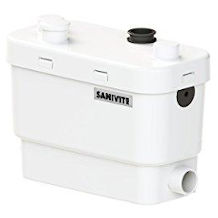
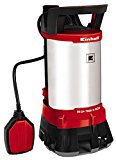
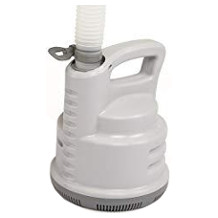

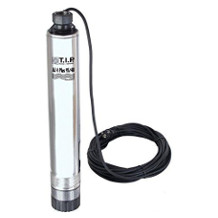
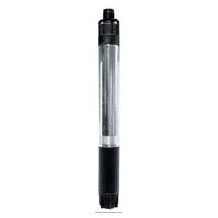

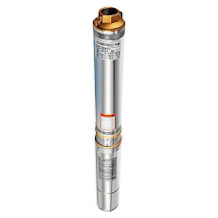
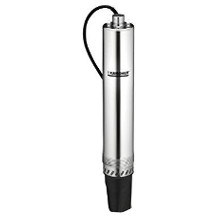
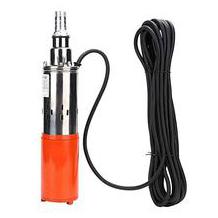
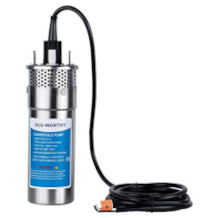
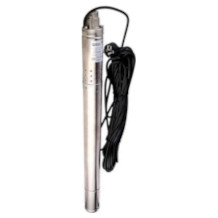

 21 reviews
21 reviews
